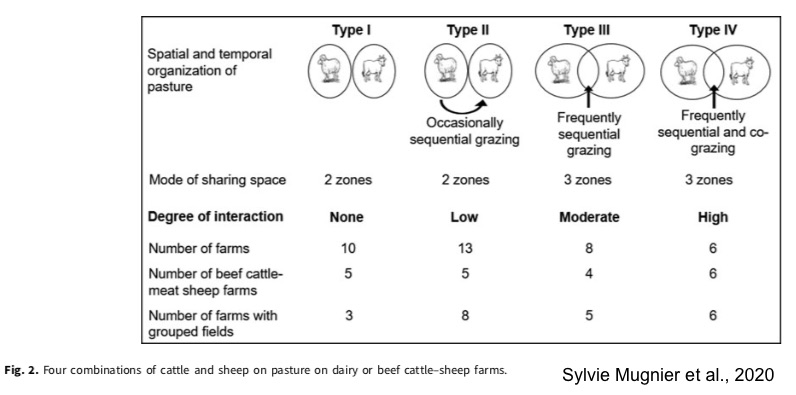new-DEAL
|
Article scientifique Sylvie Mugnier, Catherine Husson, Sylvie Cournut Why and how farmers manage mixed cattle–sheep farming systems and cope with economic, climatic and workforce-related hazards Renewable Agriculture and Food Systems 1–9. Combining cattle and sheep on the same farm can be a promising way for farmers to face uncertainties and produce in an agroecological manner. Previous studies showed benefits of mixed-species grazing on animal health and pasture use. However, few studies have examined how farmers truly manage the two species on their farms and why. The purpose of this study was to explore this issue by surveying 37 farmers who combined meat sheep and beef or dairy cattle on their farms. We chose a systemic and comprehensive approach to the functioning of mixed-species livestock farming systems (MSLF) by considering all dimensions of the system influenced by mixing species (i.e., system configuration, grazing, marketing of products, work and adaptive capacity) and by considering the farmers’ viewpoints. The benefits of mixing species that farmers mentioned concerned economic stability and optimal use of grassland resources. Although farmers usually mentioned workload as a disadvantage, the facts are not so clear, and mixing species also benefits work. Farmers cited the pleasure of varied work and the flexibility of work organization. We identified four types of combining cattle and sheep on pasture that express a gradient of the interaction between the two species (from no to high interaction) and are influenced by field configuration (grouped or scattered) and cattle production (dairy or beef). Regarding work organization, ways to combine the two species concern distribution of work required for each species among workers (versatility or specialization) and over the year. Three modes of temporal organization of the work required for each species, which corresponded to different strategies for organizing animal-production cycles, the availability of labor and the willingness to use resources, were identified. To adapt their farm to climatic, economic and workforce-related hazards, farmers used mechanisms related to the combination of the two species: modifying the ewe/cow ratio, breeding periods, worker versatility, grazing management and allocation of resources between species. Our study showed the interest of a systemic and comprehensive approach to MSLF that are promising for the agroecological transition but poorly documented. In particular, it highlighted the need to consider work as part of the system to be configured, managed and adjusted along with the other parts and not simply as a set of constraints.Publié en ligne par Cambridge University Press: 07 December 2020 Keywords: Agrobiodiversity, agroecology, complementarity, livestock farming system, work A consulter ici : https://doi.org/10.1017/S174217052000037X  |